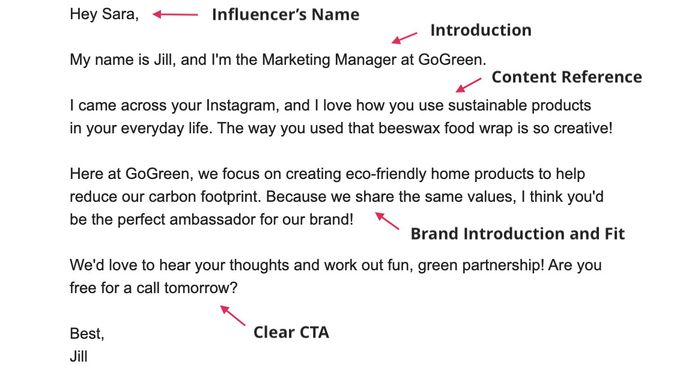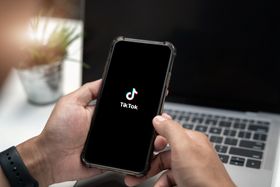5 Pro Tips for Finding Instagram Influencers for Shopify in 2023
Published November 9, 2022

Getting reputable influencers to recognize, recommend, and champion products on your Shopify store is a fantastic way to increase sales.
At a time when customers are becoming increasingly distrustful of traditional marketing methods, influencer advertising can be a great way of using Instagram to boost Shopify conversions. Not only do influencers help to facilitate a better connection with your target audience, but they also expand your store’s reach and give you useful tips on how to enhance your campaigns.
The challenge for most companies is finding influencers that are aligned with their brand values and perfectly positioned to drive results. Here’s how you can start pinpointing the right influencers.
» Looking for alternative marketing methods? Follow this ultimate guide to e-commerce ads
1. Define Your Business Goals
First, you’ll need to think about why you’re working with influencers, because they don’t just help to increase revenue. They can also boost brand awareness, increase social media engagement, and strengthen your company’s reputation. Deciding what you want to accomplish before you start searching will help you determine who you need to work with and what resources you may need to allocate.
Notably, there are various different kinds of influencers to consider too, defined by their following. The more followers an influencer has, the more they’re likely to charge:
- Micro influencers: 10k-100k followers like Grace Surguy
- Mid-tier influencers: 100k-500k followers like Simply Food by Mandy
- Macro influencers: 500k-1 million followers like Kim Kardashian
» Want to increase your sales specifically? Discover how to use e-commerce influencers to drive sales
2. Research Your Audience's Preferences
Next, it’s time to get to know your audience. It’s important to work with professionals who already have a strong connection to the people you want to reach. Leveraging available resources such as your buyer personas, sales and marketing insights, and competitor research, define what kind of influencers your customers are most likely to follow.
If you know who some of your existing customers are, you can consider looking at the influencers they follow and make a list of their qualities, so you know what to search for in a partner. If you’re not sure where to start, find out what kind of influencers your competitors are already working with, because they're probably trying to reach a similar audience.
3. Leverage Modern Methods of Identifying Influencers
In the past, companies spent hours manually searching on Instagram and Google for influencers. However, this process can be complex, time-consuming, and unreliable. Instead, it’s more effective to use an influencer marketing platform.
Influencer marketing platforms have comprehensive databases that can assist you in sorting through partners based on their follower counts, engagement, and pricing. These tools also come with relationship management software and analytics to aid in your influencer campaigns. Popular options include:
- Grin: With 37 million influencers across multiple social media platforms
- Upfluence: A self-service platform for influencers used by brands like Microsoft.
- Creator.co: An influencer marketplace with more than 500 million potential partners.
4. Carefully Analyze Influencer Engagement
While looking for influencers with a certain number of followers can be important in your marketing strategy, it’s crucial to remember that follower numbers aren’t everything. Engagement rates are what really make the most difference.
You can assess influencer engagement rates with pre-generated ratings on some influencer marketing platforms, but it’s best to do some research yourself. Look for:
- Likes: How many likes does your influencer get on an average post? Are these likes from followers, or other accounts?
- Comments: How often do people engage with your influencer through comments? A high comment count indicates high engagement.
- Interactions: Does your influencer often convince customers to @mention them, or take part in branded competitions by tagging friends?
The average engagement rate for a good influencer should be 2-3%. Some smaller influencers can even have engagement rates of up to 10%.
5. Deliver a Compelling Pitch When Connecting With Influencers
Once you’ve found the potential influencers for your campaign, the next step is convincing them to work with you. This means crafting a pitch that demonstrates the value you can offer the influencer. In some cases, you may need to consider creating an email sequence, which allows you to automatically follow up with the influencer over time. Make sure you:
- Personalize each email with references to the influencer’s work.
- Get straight to the point and highlight what you’re offering your influencer.
- Draw attention to the values of the brand, and why the influencer’s audience might be interested in your products.
Mastering Instagram Influencer Marketing for Shopify
Using an influencer marketing strategy for Shopify can be a fantastic way to increase sales, strengthen your brand reputation, and reach new customers. With the steps above, you should be able to track down an influencer that’s perfect for promoting the key values of your brand.
Once you’ve found your ideal influencer, and started working on campaigns together, make sure you track and monitor your results. You can use tools like BeProfit to calculate all of the phenomenal outcomes from your partnership.
» Interested to partner with BeProfit? Discover BeProfit's features









